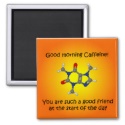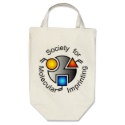|
|
Reference type: Journal
Authors: Vaihinger D, Landfester K, Krauter I, Brunner H, Tovar GEM
Article Title: Molecularly imprinted polymer nanospheres as synthetic affinity receptors obtained by miniemulsion polymerisation.
Publication date: 2002
Journal: Macromolecular Chemistry And Physics
Volume: 203
Issue: (13)
Page numbers: 1965-1973.
DOI: 10.1002/1521-3935(200209)203:13<1965::AID-MACP1965>3.0.CO;2-C
Abstract: Highly crosslinked polymer nanospheres composed of poly[(methacrylic acid)-co-(ethylene glycol dimethacrylate)] and poly(EGDMA) have been synthesised by miniemulsion polymerisation in presence of a chiral molecular template, L- or D-Boc-phenylalanine anilid. The miniemulsions and the resulting microgels were characterised by surface tension measurements, gravimetric analysis, dynamic light scattering, transmission electron microscopy, H-1 and C-13 CP-MAS NMR, and Brunauer-Emmett-Teller gas adsorption measurements. The efficiency of the non-covalent molecular imprinting was examined by binding experiments and quantified by UV absorption. The miniemulsions were converted to coagulate-free and stable latexes with a conversion of 98 +/- 2% and an apparent hydrodynamic particle diameter of 200 +/- 20 nm. Molecular imprinting was most effective when a miniemulsion of molar ratio n(MAA)/N-EGDMA = 0.25:1 was used for the microgel preparation. Enantioselective binding of the templates to the particles was observed. Binding of the L-enantiomer was four times greater in the L-imprinted polymer than in the non- imprinted polymer and 10 times than binding of the D-enantiomer in the L-imprinted microgels. This new method allows for a one- stage preparation of fully synthetic affinity receptors with a defined spherical shape and a high specific surface area due to their nanoscopic dimension
|


 Good morning caffeine magnet
Good morning caffeine magnet







 SMI logo grocery tote bag
SMI logo grocery tote bag







 SMI tie red
SMI tie red






